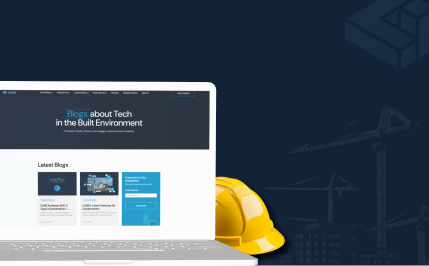
Maximizing Return on Investment in Construction Technology
Understanding the Cost Savings CUBE brings in for Construction Projects across their life cycle



At the moment, construction is one of the least digitized industries. No one can deny that the industry has a very long way to go before we can claim that it has embraced digitization at the level it could. On top of inflation, construction costs, finance costs and energy prices have all continued to rise, driving up the costs of construction projects throwing cost estimations and plans off. This means completing profitable construction projects is tricky to begin with.
Factors driving up the costs of construction
Heavy material companies foresee ongoing high pricing. Outdated practices cause inefficiencies, poor communication, and budget overruns (86% of projects). Limited profit margins exacerbate risks.
Adopting CUBE saves costs via streamlined processes and improved collaboration. Real-time information access enhances overall efficiency. This common data environment ensures better project management, reduces cost overruns, and ultimately helps construction companies operate more efficiently and profitably.
Maximizing Construction Potential with Newer Technologies
Getting familiar with digital construction and the common data environment might be what your organization needs to enhance your productivity and empower project stakeholders to create, visualize, and coordinate complex projects with unprecedented accuracy and efficiency
Not embracing digital construction and a common data environment may hinder productivity and collaboration for architects, engineers, contractors, and project stakeholders. Construction technology can increase productivity by 14%-15%, lower costs, and improve return on investment. By integrating CUBE in your construction projects, project visibility is enhanced, enabling better progress monitoring and informed decision-making. Not adopting technology can lead to decreased competitiveness in the long run. To overcome inefficiencies, CUBE provides training and additional resources, facilitating technology adoption for construction companies.
Streamlining Construction with CUBE
At CUBE, we continuously work to stay a technology early adopter. We acknowledge that a number of cloud-based solutions are now available that do away with the problems associated with server-based data storage. CUBE is specifically built for how we support the projects of our clients after reviewing a range of platforms to find the ideal solution to satisfy the needs of every discipline offered by our organization.
CUBE can offer a variety of advantages and aid in streamlining several areas of construction projects, which benefits the client by increasing project ROI.
Scheduling projects using CUBE is a breeze. Users can define tasks, distribute resources, establish dependencies, and monitor progress. By better coordinating and allocating resources, we also assist users in resolving resource management problems, decreasing the likelihood of delays or overutilization. Drawings, specifications, contracts, and permits are just a few of the many types of paperwork that are required for construction projects.
CUBE offers project stakeholders a centralized platform for document storage, version control, and simple access. It enhances teamwork, lowers the chance of knowledge loss, and guarantees that everyone is using the most recent papers. resulting in efficient communication and teamwork between project teams, which include clients, contractors, and subcontractors. We offer a centralized location for discussing project updates and problems, improving communication and transparency.

CUBE Saving Time and Money in the Design Phase
Design Iterations and Collaboration
Collaborating and suggesting design changes can be challenging for project stakeholders. Coordinating modifications across various platforms and teams can lead to inefficiencies and errors.
However, CUBE, as a common data environment, significantly improves efficiency in this process. It enables seamless collaboration among stakeholders by allowing design changes to be directly made in the BIM model. These modifications automatically propagate throughout the entire project, allowing for quick iterations on building form, sustainability, client requests, budget, and more. This streamlined approach enhances communication and accelerates decision-making, ultimately leading to a more efficient and effective project development.
Clash Detection and Coordination
Finding design clashes between different disciplines and utilities used to be a complex and time-consuming process. Coordinating multiple 3D models manually to identify clashes was challenging and prone to errors.
CUBE leverages BIM to significantly enhance efficiency in clash detection. It automates the analysis of the 3D model, swiftly identifying conflicts between various building utilities and disciplines. By proactively addressing these clashes, CUBE reduces design coordination time and prevents potential delays. This streamlined approach improves collaboration among stakeholders and ensures a smoother construction process, ultimately leading to cost savings and timely project delivery.
File Compatibility and Integration
CUBE supports a wide range of file formats commonly used in the construction industry, including CAD files, BIM models (such as Revit files), point cloud data, PDFs, and more. This compatibility allows for seamless integration and collaboration across different file types, enabling teams to work together effectively, regardless of the file formats they use.
Quantification and Material Take-offs
Manually calculating quantities from a 3D model used to be a challenging and error-prone task. It involved a significant amount of time and effort, leading to potential inaccuracies in the final quantity reports.
By automating the quantification process directly from the 3D model, CUBE can aid designers to swiftly generate accurate quantity reports, drastically improving efficiency in this process. This not only saves time but also ensures precise measurements, making cost estimation, procurement, and project planning much more efficient and reliable. CUBE's automation reduces human error, streamlines workflows, and enhances overall productivity in the construction industry.
CUBE Saving Time and Money in the Construction Phase
Construction Sequencing and Visualization
Construction sequencing and visualization were historically complex and challenging tasks. Traditional methods often involved manually planning construction processes, which required significant effort and were susceptible to errors. Visualizing the construction sequence, including equipment movement and material deliveries, was a cumbersome process that lacked accuracy and efficiency.
However, with CUBE, a common data environment, these difficulties are overcome. CUBE enables the creation of construction sequencing and phasing plans through 4D modeling, which combines 3D models with time data. This breakthrough allows construction teams to visualize and simulate the entire construction process seamlessly. The 4D modeling provides a clear visual representation of the sequence of activities, potential conflicts, and on-site coordination. By using CUBE for construction visualization, teams can optimize construction schedules, improve coordination, and make informed decisions that lead to more efficient and successful construction projects.
Automated Schedule Updates
Scheduling projects used to be a challenging and time-consuming process in the construction industry. It was prone to errors and required constant monitoring. Keeping track of changes in the actual construction progress and linking them to the schedule was complex and difficult to manage efficiently.
However With CUBE, schedule updates are automated, seamlessly linking the BIM model with the construction schedule. Real-time progress information is integrated, automatically updating the schedule as the project advances. This automation ensures that project timelines remain accurate and up-to-date, allowing teams to efficiently manage resources and make informed decisions to maintain project schedules. By leveraging CUBE for project scheduling, construction companies can streamline their processes, reduce errors, and optimize project timelines, ultimately leading to more successful and on-time project deliveries.
Improved Communication and Collaboration
Collaboration among project stakeholders during the construction phase used to be a challenging and fragmented process. Communication was often dispersed across various platforms, leading to difficulties in sharing design information and resolving issues promptly.
CUBE provides a shared platform for seamless communication and collaboration. Design information, documents, and updates can be easily shared among teams, facilitating effective communication and issue resolution in real-time. By centralizing communication within CUBE, construction projects benefit from improved efficiency, enhanced teamwork, and smoother coordination among all stakeholders involved.
.svg)


.png)
.png)



.png)









.svg)



















.png)


.png)




.png)
.png)